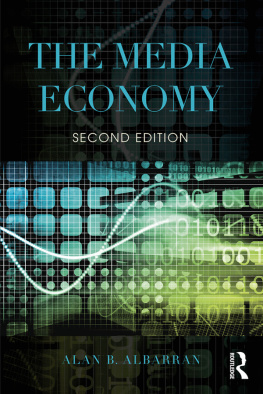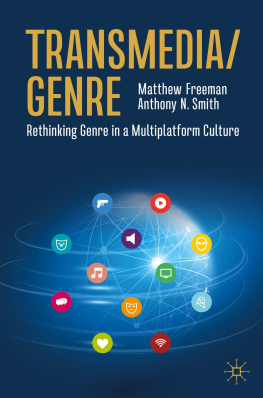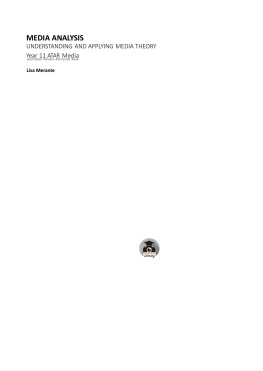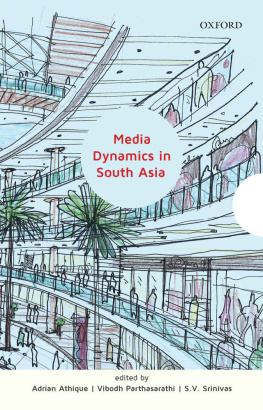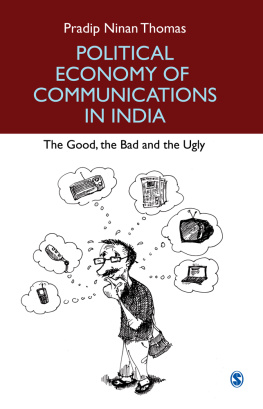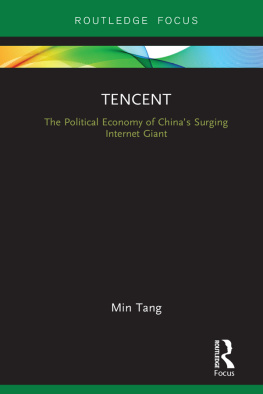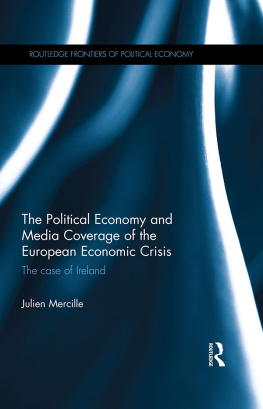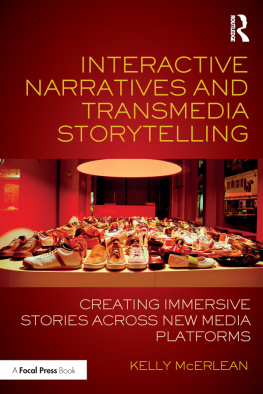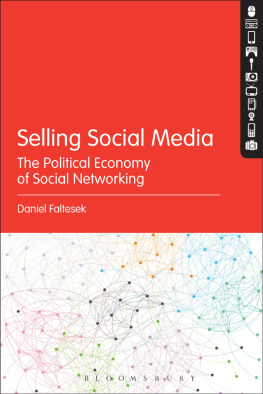
The Media Economy
In todays rapidly changing and evolving environment, the media industries have never played a larger role than they do now. From macro to micro levels, The Media Economy dissects how media industries affect the economy as a whole, and applies concepts and theories to various levels of society. This text breaks new ground through its analysis from two unique perspectives: 1) Examining the media industries from a holistic perspective by analyzing how the media industries function on the global, national, household, and individual scale; and 2) Looking at the key forces (technology, globalization, regulation, and social aspects) constantly evolving and influencing the media industries.
Building on the contributions of the original text, this Second Edition provides new references and current data to define and analyze todays media markets. To understand the role of media in the global economy, the insights included here are crucial for media students and practitioners.
Alan B. Albarran is professor of media arts at The University of North Texas. He has extensive experience as an editor and author, and is widely recognized as an international scholar in the area of media management and economics. He is a former editor of the Journal of Media Economics and the International Journal for Media Management.
MEDIA MANAGEMENT AND ECONOMICS SERIES
Alan B. Albarran, Series Editor
Albarran, The Media Economy
Albarran, The Social Media Industries
Albarran/Chan-Olmsted/Wirth, Handbook of Media Management and Economics
Ha/Ganahl, Webcasting Worldwide: Business Models of an Emerging Global Medium
The Media Economy
Second Edition
Alan B. Albarran

This edition published 2017
by Routledge
711 Third Avenue, New York, NY 10017
and by Routledge
2 Park Square, Milton Park, Abingdon, Oxon, OX14 4RN
Routledge is an imprint of the Taylor & Francis Group, an informa business
2017 Taylor & Francis
The right of Alan B. Albarran to be identified as author of this work has been asserted by him in accordance with sections 77 and 78 of the Copyright, Designs and Patents Act 1988.
All rights reserved. No part of this book may be reprinted or reproduced or utilised in any form or by any electronic, mechanical, or other means, now known or hereafter invented, including photocopying and recording, or in any information storage or retrieval system, without permission in writing from the publishers.
Trademark notice: Product or corporate names may be trademarks or registered trademarks, and are used only for identification and explanation without intent to infringe.
First edition published by Routledge 2010
Library of Congress Cataloging in Publication Data
Names: Albarran, Alan B., author.
Title: The media economy / Alan B. Albarran.
Description: Second edition. | Abingdon, Oxon ; New York, NY : Routledge, 2017. | Series: Media management and economics series | Includes bibliographical references.
Identifiers: LCCN 2016009856| ISBN 9781138886094 (hardback) | ISBN 9781138886087 (pbk.) | ISBN 9781315715094 (ebk.)
Subjects: LCSH: Mass mediaEconomic aspects.
Classification: LCC P96.E25 A483 2017 | DDC 338.4/730223dc23
LC record available at https://lccn.loc.gov/2016009856
ISBN: 978-1-138-88609-4 (hbk)
ISBN: 978-1-138-88608-7 (pbk)
ISBN: 978-1-315-71509-4 (ebk)
Typeset in Sabon Std
by Swales & Willis Ltd, Exeter, Devon, UK
This book is dedicated to the memory of Dr. John W. Dimmick (19442016). Mentor, fellow researcher, and friend.
The Media Economy examines the study of media economics from a 21st-century perspective, utilizing a holistic view. In the initial decades of inquiry (circa 1950s to the 1990s) media economics tended to be approached from singular viewpointssuch as focusing on particular media industries, or specific practices like financing and economics, or a particular country, like the United States. Much of my earlier work and books on the subject fell into this same paradigm. My research and writing reflected what others were writing and researching.
Clearly the media industries (and for that matter much of the world) have experienced unprecedented change and evolution since 1990 owing to a confluence of factors: globalization, regulatory reform, social changes, and of course technology. This has forced researchers in the field of media economics to take a wider viewpoint in an attempt to assess what is happening. The result is clearmedia economics must be examined across a broader spectrum of inquiry, because it cuts across numerous areas and levels of activity.
In this second edition of The Media Economy, the primary goal is to update and expand the content, and continue to break new ground in the way media economics is both studied and approached by students, scholars, researchers, and policymakers. The Media Economy is a broader title that reflects the holistic nature of the field of study. The text will emphasize the key drivers and concepts associated with the media economy, and the relevant theories and application of these theories to analyze the media economy. The book draws on examples from around the globe as well as from the United States to illustrate key points and concepts.
THE PLAN OF THE BOOK
This book is designed for both research and teaching purposes. For researchers, the book provides a tool to understand the different components of the media economy and their influence on one another. As a teaching tool, the book could be used as a primary or secondary text at both the undergraduate and the graduate level for courses in such subjects as media economics or media management, or a seminar in media industries. My goal as a writer is to communicate ideas as clearly as possible, so the style is designed to be clear and concise.
There are a total of 12 chapters in the book, and there are learning objectives found at the beginning of each chapter and discussion questions at the end of each chapter. The first four chapters provide an introduction and foundation for analyzing the media economy and introducing theories and concepts, along with a discussion of markets and their evolution. Chapters 59 look at the main drivers of the media economy, including technology, globalization, regulation, and social aspects. concludes, with a summary and directions for future research. There are several case studies presented throughout the book to help emphasize key points and concepts.
NEW TO THIS EDITION
This edition has been thoroughly updated across all of the chapters with new material. The case studies have been expanded with new material and revised as needed. All tables and figures have also been updated with the latest information available. Many chapters contain new examples from countries outside the United States. While the number and titles of chapters remain the same as in the first edition, the content has been completely refreshed and expanded as necessary.
I first want to thank Linda Bathgate, my long-time editor at Taylor & Francis/Routledge, for her enthusiasm and support for my work. I first started working with Linda at Lawrence Erlbaum Associates back in the 1990s (we both were very young) before it was acquired by Taylor & Francis. I appreciate her as both a professional colleague and a friend.
My colleague at the University of North Texas, Dr. Xiaoqun Zhang, helped in this edition by authoring four of the new case studies found in the chapters on technology and globalization. His contributions have made these chapters stronger, and I thank him for his assistance.
Next page
